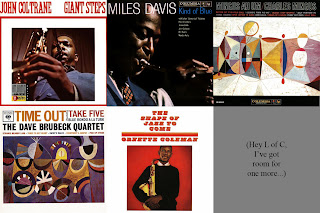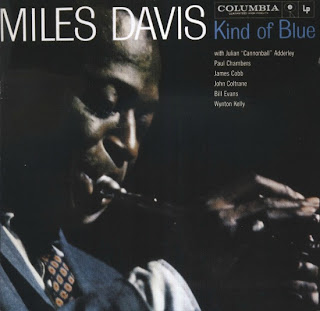The truth of religion comes from its symbolic rendering of man's moral experience; it proceeds intuitively and imaginatively. Its falsehood comes from its attempt to substitute itself for science and to pretend that its poetic statements are information about reality.
-- Eugene D. Genovese, Roll Jordon Roll, p. 162.
In every generation, a person is obliged to regard himself as if he personally had come out of Egypt; as it is written, "And you shall tell your son on that day, this is because of what the Lord did for me, when I came out of Egypt."
-- The Passover Haggadah*
So a few nights ago—both Monday and Tuesday nights, in fact** —I obeyed the ancient halachic (Jewish legal) commandment and told my son that we were doing various odd things (eating matzah, etc) because "of what the Lord did for me, when I came out of Egypt." Rather to my regret, I had earlier used the quote as a punch line of a joke (my wife and I were standing in line with a huge cartload of Passover groceries; she lolled with exhaustion; and I, in a joking-but-really-serious manner, quoted Exodus), so my son took it as a joke: "you didn't really come out of Egypt", he said. And of course he's right, not only literally, nor only in that, as an Atheist, I don't believe that YHVH took anyone anywhere, but in the sense that I know that—according to the best current historical knowledge—no such event as the Exodus ever happened (save, perhaps, with a handful of people, a number who would leave no mark on the historical or archaeological record). The Jewish people evolved, culturally, out of the inhabitants of the Land of Canaan aka Land of Israel; there was, as best we know, no prehistory of slavery and liberation. Thus the sentence is not, for me, true according to the traditional interpretation, that "had not the Blessed Holy One brought our ancestors out of Egypt, we and our children and our children's children would still be in slavery to the Pharaohs in Egypt," thus we are all really and truly freed, just, as it were, anticipatorily.***
So why do I tell my son that?
The obvious answer is, simply, tradition. As a secular Jew, I observe Passover the way secular Christians celebrate Easter: for the fun and the food**** and the family, not as having anything to do with any metaphysical truth. And that's perfectly true (and certainly perfectly valid) as far as it goes. But it's far from the whole truth.
Because I've been saying that sentence since long before I became a father, whenever anyone asked me about Passover -- saying it, really, since I started holding to (and not simply celebrating) the holiday, sometime in college. And I've been saying it perfectly seriously. So why, and how?
The answer is: it's an act of imagination. Of pretending. Of acting, of being, "as if".
This is, of course, not original with me. The seder has always consisted of an imaginative act. Indeed, an imaginative act is at the seder's heart. It takes an imaginative act to regard oneself—born and raised in Roman Palestine or Medieval Spain or Early Modern Poland or fin de siècle New York—as having been personally freed from somewhere you have never even been. There are multiple ways of doing this, of course; one traditional way is to regard "Egpyt" itself as a metaphor for various states of restriction. But in any event an act of pretending was required.
The key here is that pretending and imagination are not simply children's games. They are that too, of course. But they are also one of the ways that human beings make meaningful the world.
This is why conservative radio talk show host Dennis Prager was wrong when he suggested, a number of years ago that
any Jews who believe the Exodus did not occur should have the intellectual honesty to stop observing Passover. They should spend the week studying the truths of archaeology — that is their haggadah — rather than what they regard as the fairy tales of the haggadah and Torah.This is only true if one thinks that fairy tales have no value—that fiction and imagination and pretending have no value.***** If the only thing worth observing is the strictly true. But not only are stories part of what it means to be human, part of how we understand and make sense of the world; the imaginative act has always been central to the experience of the seder. We have always been commanded to 'regard ourselves as if'. This centrality of the imaginative act is, I think, one of the reasons that Passover has always been (despite the stress that accompanies its preparation) my favorite Jewish holiday.
Okay, but what is the point of the pretending? What is the meaning of the imaginative act?
Well, there are multiple meanings. That's the point. Imaginative acts, stories, are told in part because of their polyvalence, their richness, their ambiguity. We can talk about how freedom hits us unprepared; how it always requires outside assistance, and cannot be accomplished on one's own; about how it requires various restrictions, symbolized by abstaining from leaven for eight days; about how it is communal and not individual. That our freedom was given, not earned; that it is not yet complete. It forces us to think about the nature of liberation and history and memory. It opens to the meanings we give it.
Still, for me, the deepest and best meaning is always the one given, repeatedly, in the bible:
When a stranger resides with you in your land, you shall not wrong him. The stranger who resides with you shall be to you as one of your citizens; you shall love him as yourself, for you were strangers in the land of Egypt. (Leviticus 19:33-34)To imagine ourselves as enslaved—as oppressed, as strangers—should, ideally, be the motive for compassion, for charity, for action towards justice. Not a celebration of what we have been given, but a determination to share it.
The Exodus never happened? The Lord is non-existent? So what? We have always imagined ourselves as coming out of Egypt: such an act is no harder (and no easier) whether the story is true, exaggerated or simply fiction. Nor no less meaningful.
We must inhabit the pretense: really believe it, really feel it. Taste it in our mouths, like dry, unleavened bread and bitter herbs.
And then we can, truly, tell our children: "it is because of what the Lord did for me. When I came forth from Egypt."
Because it's true: in the way that the best fiction, the best fairy tales, are true.
Update from the following year: it appears I am far from alone in being a secular Jew who appreciates the seder. (While updating I fixed some of the punctuation.)
__________________________
* Normally I would alter the translation to be gender-neutral—"each person is obliged to regard themselves as if they personally", or something like that. (And the word in the Hebrew is adam—human—not ish, man.) But Hebrew is such a gendered language that every verb expresses gender, and my sense is that a gender neutral translation here would inevitably be unfaithful to the text—which I would be happy to do in a seder, but not in a quotation, where I'm trying to get it at least plausibly right. (Of course, my Hebrew is not nearly strong enough to be described as a shaky smattering; so I could well be wrong here. If so, I hope one of my better informed Noble Readers will let me know in comments.
** Of all the redundantly duplicated holidays in the Jewish tradition, is there any that is sillier and more counter to the spirit of the occasion than the duplicated seder, which, of course, belies the famous line "why is this night different from all other nights"? Let's face it, "why is this night different from all other nights except last night, which was precisely the same" just doesn't have the same ring to it.
*** A genuinely unsustainable image of historical process and (lack of) historical change, apart from everything else -- a part of the essentially ahistorical view of traditional Judaism. (See Yosef Hayim Yerushalmi's classic book Zakhor: Jewish History and Jewish Memory for an exploration of this point.)
**** Er, okay, maybe not for the food.
***** Which is not to be confused for taking pretense and imagination as a route to truth. Prager, somewhat pathetically, says that he "choose[s] to believe the story despite the archaeologists’ (subjective) claim of no evidence... I didn’t rely on archaeologists for my faith when they confirmed [the Exodus story], and they have no effect on my faith when they deny it". But the question of whether the Exodus occurred is not a question of faith, but of historical fact. And the claim of no evidence is not subjective; it is a claim which is made (and can only be disputed) on the merits. Of course one can choose to believe what one likes regardless of the evidence—that the Earth is less than 10,000 years old, or that the moon is made of green cheese. But it's not something that's reasonable to do. And, indeed, Prager recognizes this, for in addition to basing his claim on faith he also (trying to have it both ways) makes claims of evidence and reason -- that such a story could and would not have been invented; that the archaeologists in question are biased against religion (and thus, presumably, misreading the evidence)—which are irrelevant if it's a matter of faith. (If it's a matter of reason, though, they're relevant—just not persuasive, given the totally of the evidence.) Prager also takes a third tack, and includes a number of rather relativistic denials of archaeological truth, on the grounds that archaeologists change their minds—missing the point that the changing of minds is a mark of attending to evidence, not a reason to disbelieve it. This sort of shifting of grounds -- denials of reason and evidence's relevance, claims of vindication on those grounds and claims that scientific knowledge is truly possible—is, sadly, all too common when religious believers are confronted with what Stephen Colbert has aptly called "reality's well-known liberal bias". It's never a pretty sight, though.






